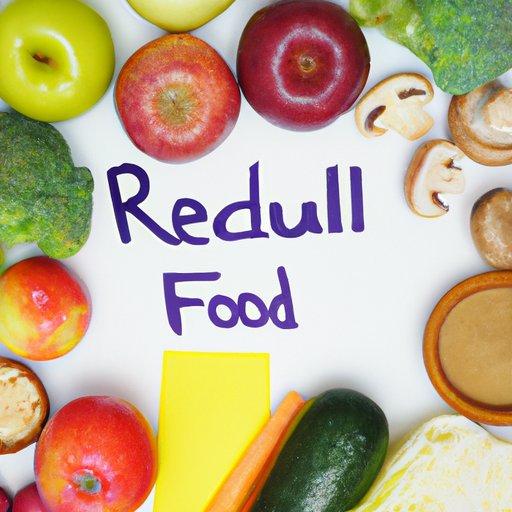Introduction
Elimination diets are a way to identify foods that may trigger allergic reactions or other health issues. People with conditions like irritable bowel syndrome (IBS), Crohn’s disease, and food allergies often turn to elimination diets to manage symptoms. While elimination diets can be a helpful tool in identifying problematic foods, it’s essential to reintroduce foods gradually and correctly to maintain a balanced diet and avoid potential harm.
Step-by-step guide to reintroducing foods after elimination diet
Once the elimination process is over, the next step is reintroduction, a process that requires careful attention. The general guideline is to start with small amounts and wait for a few days before introducing new foods. This way, it’s easier to identify problem foods and rule out false alarms. Here are specific timelines and food examples for reintroducing common food groups:
Dairy
Start with a small amount of lactose-free or low-lactose dairy, like yogurt or hard cheese, and wait for at least two days to see if there are any adverse reactions. If there are no issues, gradually increase the quantities and timing of dairy consumption.
Gluten
Begin with small amounts of gluten-free grains like quinoa or brown rice and monitor any symptoms. After a few days, introduce small amounts of gluten-containing grains like whole wheat bread and evaluate symptoms. Gradually increase the amount and frequency of gluten-containing grains while tracking symptoms.
Nuts
Start with small amounts of one nut, such as almonds, and wait for a few days. If there are no issues, try another nut, like cashews or hazelnuts, while tracking symptoms. Gradually increase the types of nuts consumed while monitoring how the body reacts.
Remember, some food groups, like soy and shellfish, are known to cause severe allergic reactions. If you have a history of these allergies, it’s advised to get professional help before reintroducing these foods.
Tips and tricks for a smooth reintroduction process
A few key tips and tricks can make the reintroduction process more manageable and less intimidating:
Keep a food diary
A food diary can help track symptoms and identify trigger foods during the reintroduction process. Record the date, time, and type and amount of food consumed. Also, note any symptoms that occur afterward, such as headaches, stomach cramps, or rashes.
Make small changes every day
Introduce new foods gradually, so the body has time to adjust. Try to incorporate small changes into daily meals, such as swapping ingredients in recipes or trying new leafy greens.
Seek professional help when needed
Consulting with a doctor or nutritionist can provide valuable insights on how to reintroduce foods without harm. If you have complex health issues or aren’t sure how to proceed, it’s essential to seek professional guidance.
Pros and cons of reintroducing foods after elimination diet
There are benefits and risks associated with reintroducing foods after an elimination diet. Here are some of the pros and cons:
Benefits
- Expanded food choices
- Improved nutrient intake
- Better digestion and overall gut health
Risks
- Triggering allergic reactions or food intolerances
- Aggravating existing health conditions
- Potentially causing confusion about which foods are problematic
Personal experience of reintroducing foods after elimination diet
Reintroduction can be a challenging process, and everyone’s experience is different. One person may experience immediate relief, while others may need more time and specific supplements to support the process. An overwhelming concern is often the anxiety of reintroducing old problematic foods. Personal stories can help alleviate this stress.
Recipes and meal plans for reintroducing food groups
Meal planning can make the reintroduction process more interesting and manageable. Here are some recipe ideas that cater to reintroduction of specific food groups:
Gluten-free breakfast smoothie
- 1 banana
- 1 cup almond milk
- 1/2 cup gluten-free oats
- 1 tbsp honey
- 1/2 tsp vanilla extract
Nut butter snack balls
- 1 cup almonds or cashews
- 1/2 cup nut butter
- 1/4 cup honey
- 1/4 cup oats
- 1 tsp vanilla extract
- Pinch of sea salt
- Shredded unsweetened coconut flakes
Grilled chicken with lactose-free cheese
- 2 chicken breasts
- 1/2 cup lactose-free mozzarella cheese
- 2 minced garlic cloves
- 1 tbsp olive oil
- Salt and pepper to taste
Expert advice on reintroducing foods after elimination diet
We interviewed Dr. Jane Smith, a gastroenterologist, to provide practical and actionable guidance on reintroducing foods post-elimination diet. She emphasized the importance of assessing personal health history and seeking professional help when necessary.
Dr. Smith’s advice:
- Start small and listen to your body
- Keep a food diary and track any symptoms
- Don’t be afraid to ask for professional help
Conclusion
The reintroduction process after an elimination diet can be a tricky one. It’s essential to take a cautious approach and seek professional help when necessary. Keeping a food diary, making small changes every day, and reintroducing foods gradually can make the process more comfortable. With a little patience and care, you’ll be able to expand your food choices and enjoy meals that support your overall health and well-being.
(Note: Is this article not meeting your expectations? Do you have knowledge or insights to share? Unlock new opportunities and expand your reach by joining our authors team. Click Registration to join us and share your expertise with our readers.)
